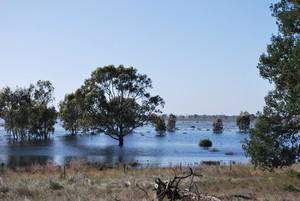Rising seasRural areas more vulnerable to sea-level rise
Type “sea-level rise” in an internet search engine and almost all the resulting images will show flooded cities. But there is a growing recognition that sea-level rise will mostly impact rural land–much of it privately owned—where existing knowledge is insufficient o best inform private and public decisions on how to cope with the threat.

Flooded farms may be coming due to the sea's rise // Source: commons.wikipedia.org
Type “sea-level rise” in an internet search engine and almost all the resulting images will show flooded cities, with ample guidance on civic options for protecting urban infrastructure, from constructing seawalls to elevating roadways.
But a new review article in Nature Climate Change highlights the growing recognition that sea-level rise will mostly impact rural land–much of it privately owned—where existing knowledge is insufficient to best inform public and private decisions regarding the encroachment of wetlands into farm land and forests. Those decisions involve complex tradeoffs between the value of different land uses. Whereas many landowners see upland-to-wetland conversion as an economic loss, wetlands also provide valuable ecosystem services by improving water quality, supporting marine fisheries, and protecting against flooding.
VIMS says that the paper—based on research funded by the National Science Foundation—is the first effort to synthesize the growing number of studies of land conversion driven by sea-level rise. One of the clearest signs of this conversion are “ghost forests”—stands of dead trees with new marshlands lapping at their bleached trunks.
Lead author Matt Kirwan, an associate professor at William & Mary’s Virginia Institute of Marine Science, says “Ghost forests are one of the most prominent indicators of climate change. Recent research shows that submergence of rural land—marked by ghost forests and abandoned farm fields—is widespread, ecologically and economically important, and globally relevant to the survival of coastal wetlands.”
In the Chesapeake Bay region alone, more than 150 square miles of forest have converted to marshland since the mid-1800s. Rates of forest retreat are accelerating around the world, with mid-Atlantic forests retreating inland more than twice as fast as they were 150 years ago.
